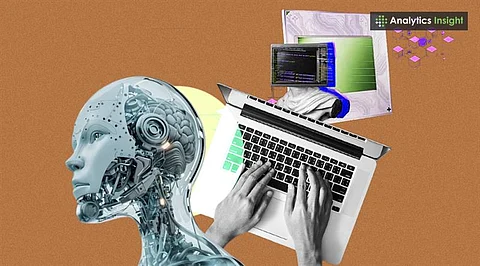

AI and Web3 are collaborating to create a decentralized, secure, and more responsive digital ecosystem.
A smarter internet means improved personalization, data privacy, and intelligent automation.
The fusion of these technologies could unlock an economic value of $13 trillion by 2030, according to McKinsey.
The internet is undergoing a major transformation, one that goes beyond faster connection speeds to include smarter interfaces and more personalized experiences. AI and Web3 are at the heart of this shift, reshaping how people engage with the digital world.
Once a static platform for checking email and reading news, the internet is now becoming more intelligent, adaptive, and decentralized. This evolution is driven by the convergence of AI’s learning capabilities and Web3’s user-first, decentralized architecture. Together, these technologies are giving users greater control, making online experiences more personalized, secure, and empowering than ever before.
A phone knowing its user's schedule is not the only task a smarter internet performs. An innovative internet, moreover, stays connected with the ecosystem where:
Content personalization is performed in real time.
Privacy is the top priority and is owned by the user.
Automation works faster and more accurately, facilitating better decision-making.
Reduced reliance on big tech gatekeepers due to decentralized systems.
AI is a secret task performer that works behind the scenes. Some of the observable tasks include generating Netflix recommendations and detecting fraud in banking. When it comes to the more advanced internet, artificial intelligence works more.
Personalization: Real-time adaptable websites and apps, working on the user's needs to make browsing more efficient.
Automation: AI also handles various tasks, including chat support, scheduling, and creative writing.
Security: AI systems detect anomalies and cyber threats more quickly than traditional methods.
Also Read: The Internet of Things: Innovations Shaping the Future
Web3 is the next iteration of the internet, built on blockchain and decentralized protocols. Unlike Web2, where user data is stored on central servers, Web3 puts ownership back in the hands of individuals.
Decentralisation: No single company controls the data
Transparency: Blockchain ensures trust through public ledgers
Digital Identity: Users can carry their credentials and history across platforms
When two of the technologies combine, the potential is immense. Artificial intelligence can sift through decentralized data more intelligently, while Web3 ensures that this data isn’t misused.
Decentralized Finance (DeFi): AI helps detect fraudulent transactions in real time.
Healthcare: AI processes patient data securely across decentralized networks.
Content Creation: AI tools generate content, while Web3 ensures ownership and royalty tracking.
Also Read: Building Smarter Frontends: How AI is Shaping the Future of Modular Applications
The future of the internet will face numerous challenges. It’s not all sunshine and rainbows. AI systems require clean input data, while Web3 networks need to be scalable and secure. Balancing privacy and performance simultaneously in a decentralized manner is still an ongoing process.
The decentralized web aims to shift control from centralized entities to users, ensuring greater privacy and data ownership. Many experts believe it represents the future of the Internet, where transparency and user empowerment redefine how we interact online.
To add to all this, the world also faces new challenges in creating regulations for a decentralized web that is yet intelligent, should it come to pass.
AI-powered internet, Artificial Intelligence, and Web3 are collaborating to steer users toward a more innovative online experience. The advanced internet will be intelligent, focused, and decentralized. Technologies are maturing with a clear direction.
Users will undoubtedly experience a faster, more meaningful, and secure online service. A smarter internet will impact all aspects of life, including work, learning, and shopping.
